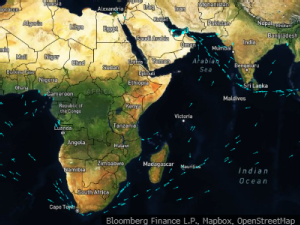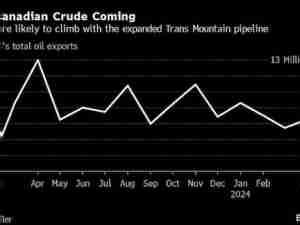
U.S. wholesale and retail propane prices were slightly lower on average this winter than last winter, largely because of mild weather and robust propane inventories heading into this winter heating season. Despite lower prices and lagging domestic demand, however, continuing international demand for U.S. propane contributed to large withdrawals and left end-of-winter propane inventories below last winter’s year-end levels.
Wholesale propane prices at the U.S. benchmark at Mont Belvieu, Texas, averaged $0.77 per gallon (gal) during the 2023–24 winter heating season. This price was slightly lower than the $0.80/gal average recorded the previous winter heating season and the $1.25/gal average for the 2021–22 winter heating season. Above-average winter temperatures reduced propane consumption in the residential and commercial sectors, particularly in the Midwest and Northeast regions, which are home to about half of the more than 6 million U.S. households that report using propane as a primary space heating fuel.
Typically, propane prices rise during the winter, when demand for propane as a winter heating fuel grows and propane inventories are drawn down. In January 2024, winter heating needs peaked, as measured by heating degree days, which indicate how cold the temperature was on a given day or during a period of days.

Retail propane prices for the three U.S. regions for which we publish data—the East Coast (PADD1), Midwest (PADD 2), and Gulf Coast (PADD 3)—decreased this winter compared with last winter. Prices in all three regions stayed relatively flat until mid-January, when wholesale Mont Belvieu prices began to increase.
On the East Coast, propane prices averaged 1% lower than last winter, although they increased slightly above last winter beginning in January. In the Midwest, prices stayed well below the previous winter’s prices and ended the season 10% below last winter. On the Gulf Coast, prices began the heating season 7% below last winter and ended 1% lower.
The lower retail prices helped keep average household expenditures on winter propane about 3% lower. Although we originally expected that households would spend $1,340 on propane over the winter, our final estimate was $1,300.

Propane inventories reflect supply and demand balances, and inventory levels affect prices. The propane storage injection season typically runs from April through October, followed by a withdrawal season during the winter heating months. Propane inventories remained above the previous five-year range (2018–19 to 2022–23) for most of the storage injection season. For the first week of the winter heating season ending November 3, 2023, we reported U.S. propane inventories at 98.4 million barrels, 12.2 million barrels more than the five-year average.
The Midwest is the U.S. region with the largest propane demand, and it frequently uses in-region inventories to absorb seasonal changes in propane supply and demand. In addition to the Midwest’s high demand for propane for grain drying, about one-third of U.S. households that report using propane as a primary space heating fuel are in the Midwest.

Grain-drying demand can significantly affect propane inventories in the Midwest. About 90% of the U.S. corn crop is grown in the Midwest, and if crops mature late (that is, at the end of October or later) or have a high moisture content at harvest, producers use grain dryers (primarily natural gas-fired or propane-fired) to dry the grain enough to make it marketable. However, when the corn crops reach maturity in late September or early October, producers can delay harvest to the end of October and allow the crops to dry in the field, reducing propane demand for commercial grain drying. Last year’s corn crops were planted early, leading to an earlier-than-normal harvest and less grain-drying propane demand in November 2023. As a result, Midwest propane inventories began the winter heating season near the top of the five-year range.

The Gulf Coast, where most U.S. petrochemical consumption and propane export capacity are located, accounts for about half of U.S. propane storage capacity. Propane inventories in the Gulf Coast region began at the top of the five-year range at the start of the winter heating season. Inventories drew down to a low of 30.2 million barrels in the last week of February 2024, which was average for the previous five years.
Global demand for propane has increased because of its growing use as a petrochemical feedstock in propane dehydrogenation units and flexible feedstock crackers. U.S. propane exports to Asia have grown rapidly as consumption of propane as a petrochemical feedstock, as well as consumer demand, has increased in recent years. Propane exports set a record high in 2023 and have continued to stay elevated through the end of the winter heating season, contributing to high inventory withdrawals. Despite record-high exports, low winter heating demand contributed to Gulf Coast propane inventories remaining near the five-year average.













